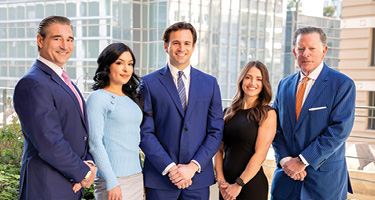Personal Injury Litigation in High-Risk Industries: Civil Claims for Catastrophic Harm
In high-risk industries such as construction, oil and gas, and heavy manufacturing, serious injuries can occur even under routine conditions. When those injuries result from a third party’s negligence—such as a contractor, equipment supplier, or site manager—a personal injury case may be the appropriate legal course of action. Consulting experienced personal injury attorneys can help determine the best path for pursuing a civil claim in these high-risk industries. These cases allow injured workers and their families to pursue compensation for the losses they've suffered outside the limitations of workers’ compensation.
The Ammons Law Firm handles personal injury cases involving structural failures, industrial explosions, mechanical malfunction, and exposure to complex industrial environments that require careful evaluation of potential risks. In these environments, multiple entities often operate alongside one another, making the identification of potential liability a nuanced process. Legal teams carefully evaluate the involvement of multiple parties and determine whether applicable legal standards were met.
Unlike workers’ comp, which is limited to specific statutory benefits, civil personal injury litigation allows for the pursuit of full compensatory damages. These may include past and future medical expenses, loss of income, emotional trauma, and diminished quality of life. A personal injury attorney must work closely with occupational safety experts, engineers, medical professionals, and economists to evaluate the full impact of the harm and prepare the claim for settlement or trial. In cases involving industrial sites, injured workers may also benefit from the guidance of accident at work solicitors who understand complex liability issues beyond workers’ compensation.
While these cases primarily seek to secure compensation, they may also encourage improvements in industry safety protocols and promote accountability among corporate actors. By pursuing civil claims against liable third parties, personal injury lawyers help promote adherence to safety standards and encourage improved practices within high-risk sectors.
With significant experience handling catastrophic harm and wrongful death litigation, The Ammons Law Firm is well-equipped to represent clients in industrial personal injury cases involving complex facts and substantial damages. Their trial-first strategy ensures that injured individuals have a voice—and a path to justice—in even the most technically challenging environments. When pursuing claims with substantial damages, an experienced attorney for injury claim can help ensure all legal options are explored.
This content is for informational purposes only and does not constitute legal advice. No attorney-client relationship is formed by reading this article. Laws may vary by jurisdiction. Please consult a qualified attorney licensed in your state for legal guidance specific to your situation.















